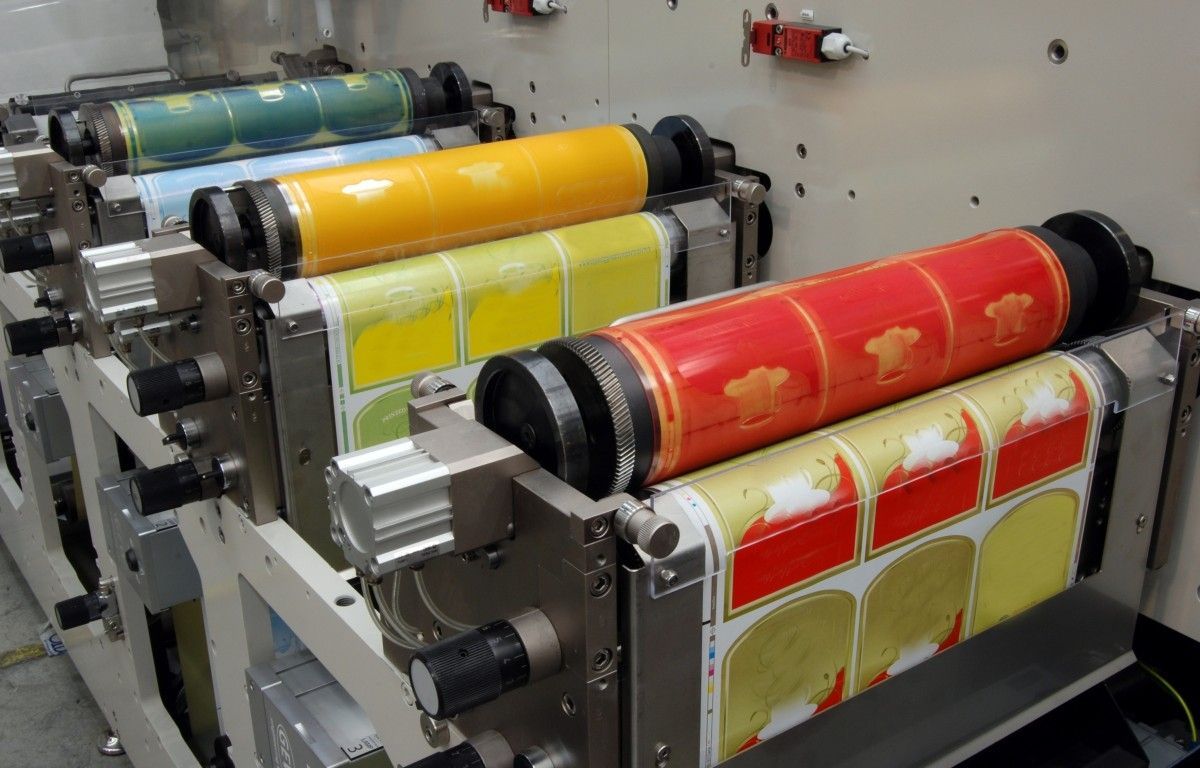The printing industry is undergoing a significant transformation, driven by the emergence of automation trends in flexo. As technology advances, the integration of automated processes in flexographic printing is reshaping the landscape of the industry. This article delves into the exciting world of automation trends in flexo, exploring how these innovations are revolutionizing printing practices and enhancing operational efficiency.

The Evolution of Flexographic Printing
Flexographic printing, commonly known as flexo printing, has a rich history that dates back to the late 19th century. Initially developed for printing on uneven surfaces, flexo printing has evolved significantly over the years. Traditionally, it relied on manual processes, but with the advent of automation, the industry is experiencing a paradigm shift.
Understanding Flexographic Printing
Flexographic printing is a versatile technique used for printing on a wide range of materials, including paper, plastic, and metal. It employs flexible relief plates and water-based or UV-curable inks to produce high-quality prints. The process has become a cornerstone of the packaging and labeling industry, known for its speed and cost-effectiveness.
Key Automation Trends in Flexo
Automation is at the forefront of the flexographic printing industry’s transformation. Here are some of the key automation trends in flexo that are currently shaping the industry:
1. Digital Workflows and Prepress Automation
Digital workflows have become a cornerstone of modern flexographic printing. By automating prepress processes, printers can achieve higher precision and reduce setup times. Digital systems enable seamless integration with design software, ensuring that every print job is executed flawlessly.
2. Automated Plate Mounting
Automated plate mounting systems have transformed the way flexographic plates are prepared. These systems ensure accurate and consistent plate placement, reducing the risk of errors and minimizing downtime. As a result, printers can achieve higher print quality and faster production speeds.
3. Inline Inspection Systems
Quality control is paramount in flexographic printing, and inline inspection systems have become indispensable tools. These systems use advanced cameras and sensors to monitor print quality in real-time, detecting defects and ensuring that each print meets the highest standards.
4. Color Management and Control
Color consistency is a critical aspect of flexographic printing, and automation has revolutionized color management. Automated color control systems ensure that colors are reproduced accurately across different print runs, reducing waste and improving customer satisfaction.
Benefits of Automation in Flexo Printing
The integration of automation in flexographic printing offers a multitude of benefits to both printers and customers. Some of the key advantages include:
1. Increased Efficiency
Automation streamlines various aspects of the printing process, reducing manual labor and improving overall efficiency. This allows printers to handle larger volumes of work and meet tight deadlines without compromising quality.
2. Cost Savings
By reducing the need for manual intervention and minimizing errors, automation leads to significant cost savings. Printers can optimize resource utilization, resulting in lower production costs and increased profitability.
3. Enhanced Print Quality
Automation ensures consistent and precise print quality, eliminating variations and defects. This not only enhances the overall appearance of printed products but also strengthens brand reputation.
4. Sustainability
With automation, flexographic printing can become more environmentally friendly. Reduced waste, energy-efficient processes, and optimized ink usage contribute to a more sustainable printing industry.
Challenges and Considerations
While automation trends in flexo offer numerous benefits, there are challenges to consider. Printers must invest in advanced equipment and training to fully leverage automation technologies. Additionally, keeping up with rapid technological advancements requires continuous adaptation.
1. Initial Investment
Implementing automation in flexographic printing requires a significant upfront investment. Printers must carefully assess their budget and long-term goals to determine the feasibility of adopting automation technologies.
2. Workforce Adaptation
The transition to automation may require reskilling and upskilling the workforce. Printers should invest in training programs to ensure that employees are equipped to operate and maintain automated systems effectively.
3. Integration Challenges
Integrating automation technologies into existing workflows can be complex. Printers must work closely with technology providers to ensure seamless integration and minimize disruptions to production.
The Future of Automation in Flexo
The future of flexographic printing is undeniably intertwined with automation. As technology continues to evolve, we can expect even more sophisticated automation solutions to emerge, further enhancing the capabilities of flexo printing.
1. Artificial Intelligence (AI) and Machine Learning
AI and machine learning are poised to revolutionize flexographic printing. These technologies can optimize print settings, predict maintenance needs, and improve quality control, ultimately leading to higher efficiency and productivity.
2. Internet of Things (IoT) Integration
The IoT is set to transform flexographic printing by enabling real-time monitoring and data analysis. Connected devices can provide valuable insights into equipment performance, allowing printers to make data-driven decisions.
3. Sustainability Initiatives
Sustainability will remain a key focus in the future of flexographic printing. Automation technologies will continue to drive eco-friendly practices, reducing the industry’s environmental footprint.
Conclusion
The automation trends in flexo are reshaping the printing industry, offering numerous benefits in terms of efficiency, cost savings, and print quality. As technology continues to advance, the future of flexographic printing looks promising, with automation playing a pivotal role in driving innovation and sustainability. To learn more about flexographic printing and its future trends, visit this article.

Frequently Asked Questions
What is flexographic printing?
Flexographic printing, or flexo printing, is a versatile printing technique that uses flexible relief plates and inks to produce high-quality prints on various materials. It is commonly used in the packaging and labeling industry.
How does automation benefit flexographic printing?
Automation streamlines processes, reduces errors, and enhances print quality. It improves efficiency, reduces costs, and contributes to sustainability in flexographic printing.
What is the future of automation in flexo printing?
The future of flexo printing is closely tied to automation, with AI, IoT, and sustainability initiatives driving further advancements in the industry.






